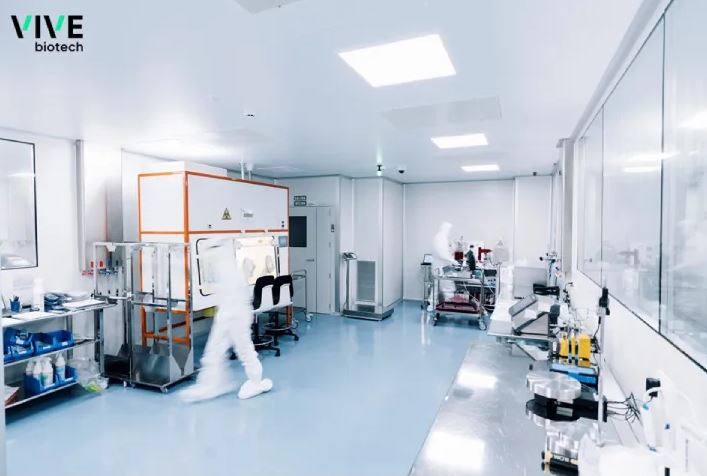
Where Sustainability Meets Disruption
The pharmaceutical contract manufacturing companies (CDMO) is no longer simply adapting to change it is driving the transformation of global pharma. As we move toward a market projected to reach $320 billion by 2029, CDMOs stand at the forefront of a paradigm shift where technological innovation and sustainability are no longer parallel tracks, but intersecting imperatives.
In 2025, the CDMO sector finds itself navigating an unprecedented convergence of forces: tightening regulatory oversight, rising ESG expectations, and a wave of advanced technologies reshaping every stage of biologics manufacturing. This new landscape is defining not only how drugs are made, but how they are developed, regulated, delivered, and valued across the healthcare ecosystem.
One of the most significant technology trends shaping the future of CDMOs is artificial intelligence. No longer confined to drug discovery, AI is now being deployed on the manufacturing floor. Vision systems like a-eye Clearance, developed by SEA Vision, enable near-perfect line clearance validation, reducing the risk of cross-contamination with 99.9% accuracy. In parallel, machine learning algorithms are analyzing real-time sensor data from IoT-enabled equipment to predict failures in bioreactors days before they occur. This predictive power is slashing downtime by up to 40%—a critical advantage in the competitive biologics sector. Regulatory agencies are also embracing AI, with the FDA and EMA increasingly accepting in silico models to validate advanced therapies, cutting review timelines from a year to as little as four months.
Equally transformative is the move from batch to continuous manufacturing. This shift is not just about improving throughput—it is redefining the efficiency and sustainability profile of pharmaceutical production. Companies like Vertex Pharmaceuticals have demonstrated how continuous processes can reduce production time for complex therapies from two weeks to under 48 hours, while simultaneously boosting yield. With embedded process analytical technologies (PAT), CDMOs can monitor and control quality in real time, enabling immediate product release and eliminating the need for post-production lab testing. Perhaps most importantly, continuous systems inherently consume less energy and generate significantly less waste—delivering a 35% reduction in energy usage and up to 90% fewer chemical byproducts.
Digital twins are also making a powerful entrance into CDMO operations. These virtual models of physical assets allow manufacturers to simulate production scenarios, optimize workflows, and respond to disruptions with unprecedented agility. Pfizer’s digital command center is a prime example, able to reconfigure global supply routes within two hours, compared to the traditional 72. During the pandemic, digital twins played a vital role in optimizing the lipid encapsulation step in mRNA vaccine manufacturing, increasing therapeutic efficacy by 25%.
Meanwhile, smart packaging technologies are building a new bridge between manufacturing sites and end patients. With the integration of RFID and NFC tags, packages can now monitor and report environmental conditions like temperature and humidity in real time—dramatically reducing losses from product degradation. Blockchain serialization adds another layer of security, ensuring drug authenticity from the CDMO floor to the patient’s hand. This is especially critical in high-risk areas such as oncology and gene therapy, where product integrity is non-negotiable.
As CDMOs embrace these digital and operational innovations, they are also under increasing pressure to embed sustainability across every layer of their operations. Green chemistry is rapidly becoming standard practice, with manufacturers substituting hazardous solvents like acetonitrile for biodegradable alternatives derived from biomass. Novo Nordisk has implemented closed-loop water systems that recycle over 2.5 million liters annually in its Danish CDMO, while Moderna’s mRNA facility in Massachusetts is powered entirely by wind energy, cutting its carbon emissions by an astonishing 92%.
ESG governance is now a core driver of CDMO competitiveness. Across the industry, new executive roles such as Chief Sustainability Officer are being created to align operational strategy with measurable climate and social goals. Institutional investors are conditioning funding on the achievement of verifiable carbon reductions—especially for Scope 1 and 2 emissions. In a move toward radical transparency, companies like AstraZeneca now require their CDMO partners to report emissions through platforms like Manufacture 2030, integrating ESG accountability into every tier of the value chain.
The logistics side of the equation is also evolving. CDMOs are moving away from globalized, fragile supply chains toward regenerative logistics models that prioritize resilience and carbon efficiency. Strategic nearshoring is bringing about 30% of API production back from Asia to Europe and North America. Meanwhile, sustainable materials are entering the packaging space, including algae-based polymers that actively absorb carbon dioxide during their lifecycle—innovations supported by regulatory frameworks such as the EU Green Deal.
Case studies from around the industry reflect this dual transformation in real time. At CDMO Live 2025 in Rotterdam, Johnson & Johnson presented a digital integration strategy that synchronizes 17 global CDMO sites through a unified digital twin network. Alkermes introduced new sustainability ROI metrics, including the Carbon Efficiency Score and Waste-to-Value Ratio—signaling a maturing approach to ESG performance. In India, the merger between Suven and Cohance has created a fully integrated CDMO companies platform combining green API synthesis with blockchain-secured packaging. Their investment of $120 million in a solar-powered CAR-T manufacturing plant has earned LEED Platinum certification and set a new benchmark for sustainable biotech manufacturing.
Looking ahead, four strategic imperatives are emerging for CDMOs seeking to thrive in this new era. First, investment in technology and sustainability must go hand-in-hand. Data shows that CDMOs allocating more than 15% of their capital expenditure to AI and decarbonization efforts are growing at twice the rate of their peers. Second, a new kind of talent is needed—engineers who understand both advanced data analytics and the principles of circular economy. Programs like those offered by MRL Consulting Group are helping bridge this skills gap. Third, regulation is no longer a barrier—it’s a blueprint. Guidelines such as ICH Q13 for continuous manufacturing and TCFD for climate-related financial disclosures are providing clear pathways for innovation within compliance. Finally, the rise of decentralized micro-facilities for personalized therapies, such as CRISPR-based treatments, is set to reshape the logistics and carbon footprint of pharma at the most fundamental level.
The message is clear. In the race to redefine pharmaceutical manufacturing, it won’t be the largest CDMOs that win—it will be the most adaptable. Those that integrate sensors into every machine, algorithms into every decision, and ecological awareness into every process will be the ones shaping the future of medicine.
2025 marks a pivotal moment for the CDMO industry. Those who align deep sustainability with emerging technology will not only lead the market—they will shape the pharmaceutical value chain for the next decade. The rest may find themselves left behind.







